Skincare in Your 20s: Managing Acne, Hyperpigmentation & Oily Skin
This post may contain affiliate links. That means that if you click on a link and purchase something I recommend, I will receive a small commission at no extra cost to you. As an Amazon Associate, I earn from qualifying purchases. This helps keep my website up and running and is very appreciated. Thank you for your support! Disclaimer
In today’s article, we are going to focus on everything related to managing your skincare in your 20s. But before I get into the specifics, it is so important to note that your age is not a skin type. I’ve emphasized this on my previous blog “How To determine your Skin Type” , and I’ll keep emphasizing it.
Despite discussing skincare in your 20s, the reason I repeat this is because in every decade, we all have individual problems that are our biggest concern. Although there are commonalities throughout each decade, like hormonal changes in your 20s, sunspots in your 30s, and fine lines in your 40s , dryness in your 50s , your unique concerns take priority.
Throughout each decade, it’s vital to tailor your skincare routine to address your specific concerns. Understanding and addressing these concerns as you age is key.
If you don’t have time to read this post right now, why not save it for later?
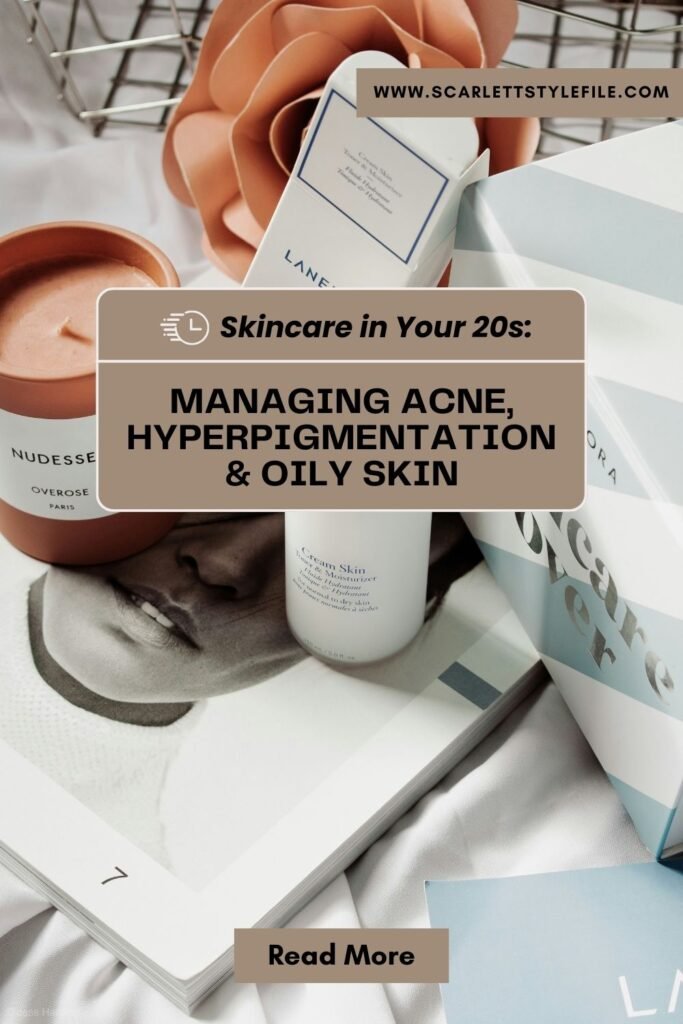
Skincare in Your 20s: Managing Acne, Hyperpigmentation & Oily Skin
So, in my early 20s, perhaps my biggest misstep was trading med school for flight school (just kidding, I’ve found my passion in flying, far more than I ever would have in the medical field) — But, on a more serious note, in my early 20s, the biggest skincare mistake I made and I’m immensely grateful to my fiancé for saving my skin early on- (let’s keep that between us, his ego doesn’t need any further inflation) is that I didn’t have a consistent skincare routine.
Believe it or not, I used to hardly ever wear sunscreen every day. I spent most of my time locked up in a library from 7:00 a.m. to 7:00 p.m., away from any windows. Sometimes I skipped washing my face at night because I didn’t wear makeup. On days when I wasn’t at the library, I was out in the sun all day, exposed to UV rays and other nasty stuff, leading to oil buildup on my face.
As a result, I had lots of blackheads and whiteheads around my nose and jawlines. I’d often go for facials to get rid of them, especially during my intense study sessions that lasted up to 14 hours a day. But let me tell you, changing your habits and starting a good skincare routine now can really pay off. I’m living proof of that.
It took me years to make these changes, and I’m not even in my late 20s yet. But already, I’m seeing the benefits. Trust me, you’ll be way ahead of the game compared to your peers if you start now. So, here are the two most important things I recommend: firstly, always wash your face at night, especially if you wear makeup. And secondly, wear the freaking sunscreen , make sure to make sunscreen a daily habit. It’s hard to break once you’re older, but if you start in your 20s, you’ll thank yourself later.
top skin concerns in your 20s
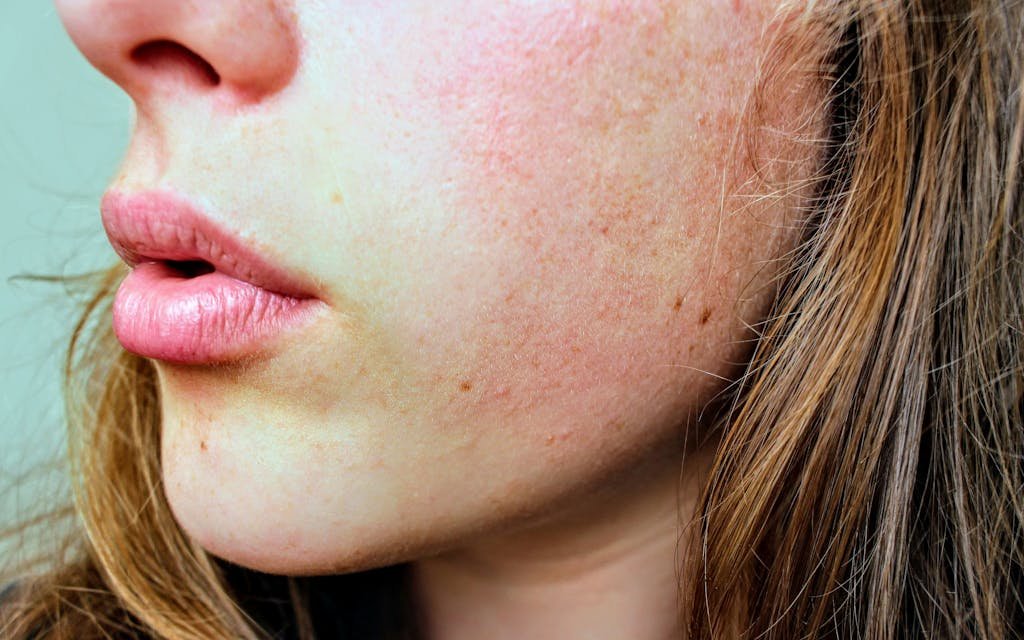
When you’re in your 20s, there are three main skincare concerns to keep in mind.
First up is acne. Even though you might have thought you left it behind in your teens, it can pick back up in your late 20s due to hormonal changes, believe it or not for some people, it just continues throughout their 20s. These shifts in hormones can show up on your skin.
Next is post-inflammatory hyperpigmentation. You might notice that those little bumps or pimples that you’re kind of playing with and popping for fun are leaving marks on your skin. These marks, also called post-inflammatory erythema, can leave lingering residual effects on our skin and affect it evenness and freshness .
Lastly, there’s the battle between oiliness and dryness. Because again, our hormones still shifting, you’re trying to figure out your skin type, but not many people talk about the effect of climat and environment on your skin . And in your 20s, you’re probably moving from home to university, to your first job, or chasing your dreams across the country, different places have different effects on your skin..
The air in Arizona killed my face; it was extremely dry while The air in Texas is extremely humid. You being a dry person in Texas versus a dry person in Arizona is very different. So understanding your environment and how your environment impacts your skin is crucial. Once you’ve got that down, you are set for life, This means knowing when to add or remove products like hydrating mists, serums, and moisturizers. The foundation is going to remain the same, with some tweaks depending on your biggest skin concerns.
Must have cleansers in your 20s
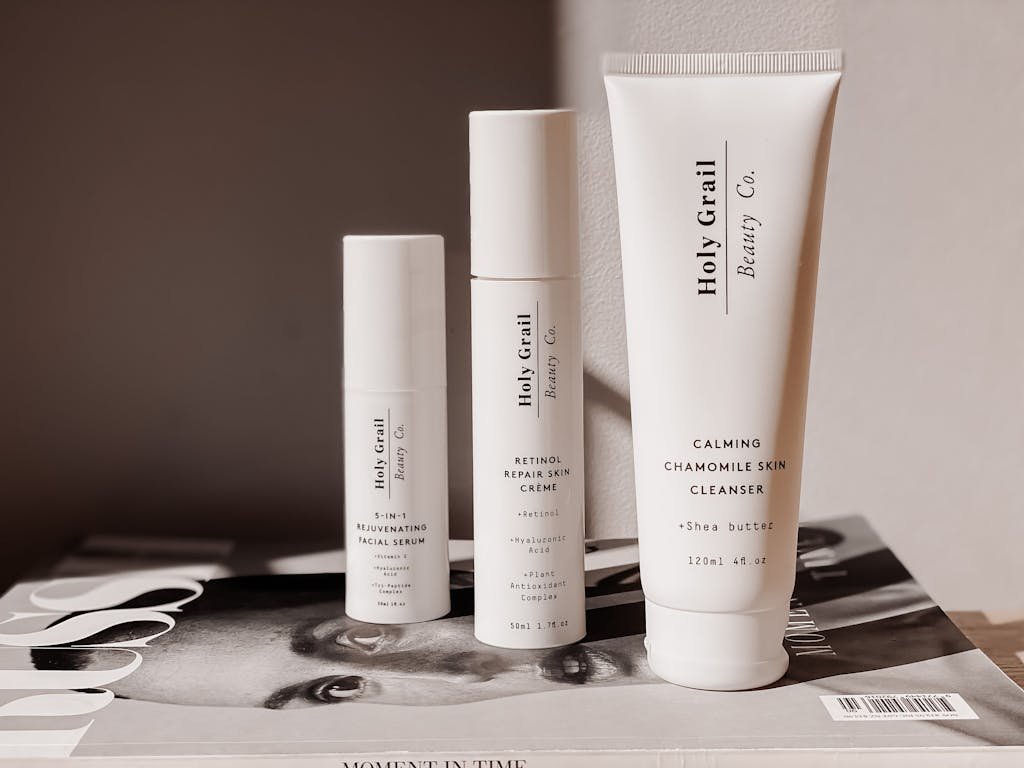
Let’s break down the steps for skincare in your 20s, starting with cleaning your face. – this is one step that can be pretty universal for most people in their 20s. Like I said, get get rid of any makeup. Some people swear by oil-based cleansers. Personally, I’m a fan of Bioderma’s micellar water, especially the travel-sized version for flights. I find it handy to put it in a spritzer bottle – I feel like I get way more mileage out of it this way by spritzing it on my face and then using a cotton pad to wipe away my makeup. But yeah, Bioderma’s my go-to for starting off.
Next up, step two: use a gentle cleanser. The most basic I have been using is Vanicream. It stings my eyes a bit, I won’t lie, and it’s not the best at removing makeup on its own, but it’s budget-friendly and gets the job done. If you’re dealing with acne and oily skin, you might want to incorporate benzoyl peroxide a few times a week into your nighttime routine. I use PanOxyl at 10%, but honestly, anywhere between 5% to 10% works similarly. Leave it on your face for a bit before rinsing it off.
Quick tip: it can bleach your towels, so stick to white ones if you’re using it. Also, if you prefer to shower in the mornings, keep it in your shower and apply it while you’re washing your body, then wash your face last this way you run less risk of bleaching your towels.
An alternative option for those who have extremely oily skin and find that benzoyl peroxide dries them out too much – this is more my fiancé’s recommendation than mine (Gotta give him credits he’s the cosmetic dermatologist here) – They’ve been getting some buzz lately, especially the one from Kate Somerville. So, if you’re looking for an alternative, a sulfur cleanser might be just the thing for your face. And that’s all for the cleansing part!
Must have exfoliators in your 20s
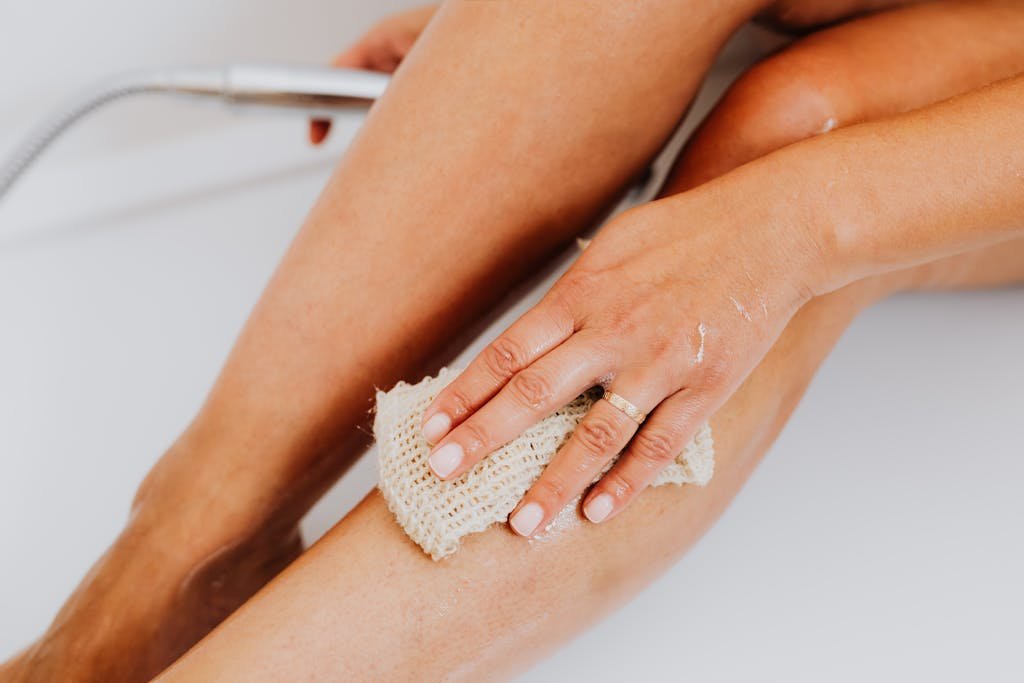
When we talk about exfoliating in our 20s, our skin doesn’t accumulate as much throughout the day, and our skin cells renew pretty quickly. So, you don’t need to use strong exfoliants. Instead, aim for something gentler lighter, maybe two or three times a week. If the air is dry, you might increase it to four times, and if it’s humid, just twice a week; otherwise, three times should do.
The Ordinary offers a glycolic acid peel at 7%, It is relatively low; it’s not going to break your bank – it’s 13 bucks so you will be fine. Bubble also has an AHA PHA mask for $18, which contains glycolic, lactic, mandelic, and gluconolactone acids. They don’t mention the exact percentages, that makes me think that it’s relatively low. Although, according to my fiancé, a lot of brands don’t tend to disclose percentages because they don’t want people fixating on them. That’s his take, which I think is extremely stupid of these brands to take this approach.
However, Bubble is a brand targets the younger demographic, and their mask is easy to use – You can leave it on for 10 or 15 minutes; it’s very light. It’s particularly good for sensitive skin because it includes gluconolactone.
Must have mists in your 20s
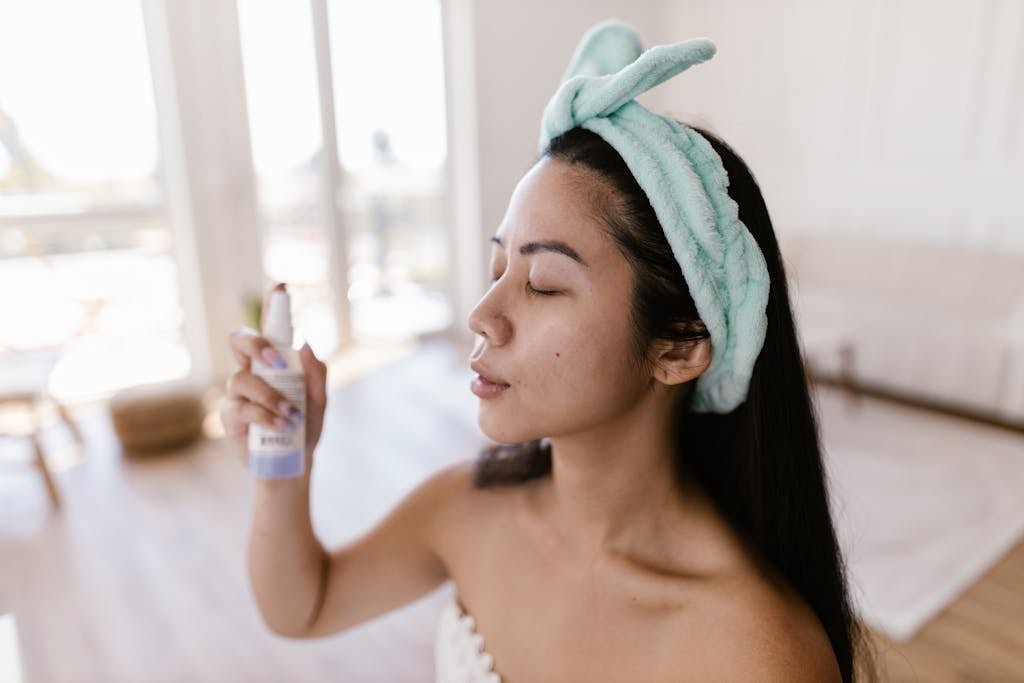
Let’s talk about mists, which can be super helpful for people dealing with acne or or those who experience extreme dryness. Take Tower28, for example. It’s a spray made with hypochlorous acid that’s great for giving your face a quick pick-me-up during the day. For instance, If you’re stuck wearing a headset at work, just give your face a spritz or spray it directly on the headset to keep bacteria away. This comes in handy, especially for folks prone to acne. During long flights when I have to wear a headset for a very long time to communicate with air traffic control, I would regularly spray it on my face and the headset to prevent breakouts.
Now, onto my glycerin-based mist. If you’ve been following my blog, you’ve probably heard me talk about this one before. For those who haven’t, I mix glycerin with rose water and put it in a small spray bottle I buy in bulk from Amazon. These bottles are really cheap. If you’ve got dry skin, this mix of glycerin and rose water (or just regular water if you prefer) can give your skin the hydration it needs.
But be careful: only make enough for one day because there are no preservatives, and the mix can spoil over time. Keep it in your bag or on your desk for quick access throughout the day, especially if you work in a dry office .
Must have serums in your 20s
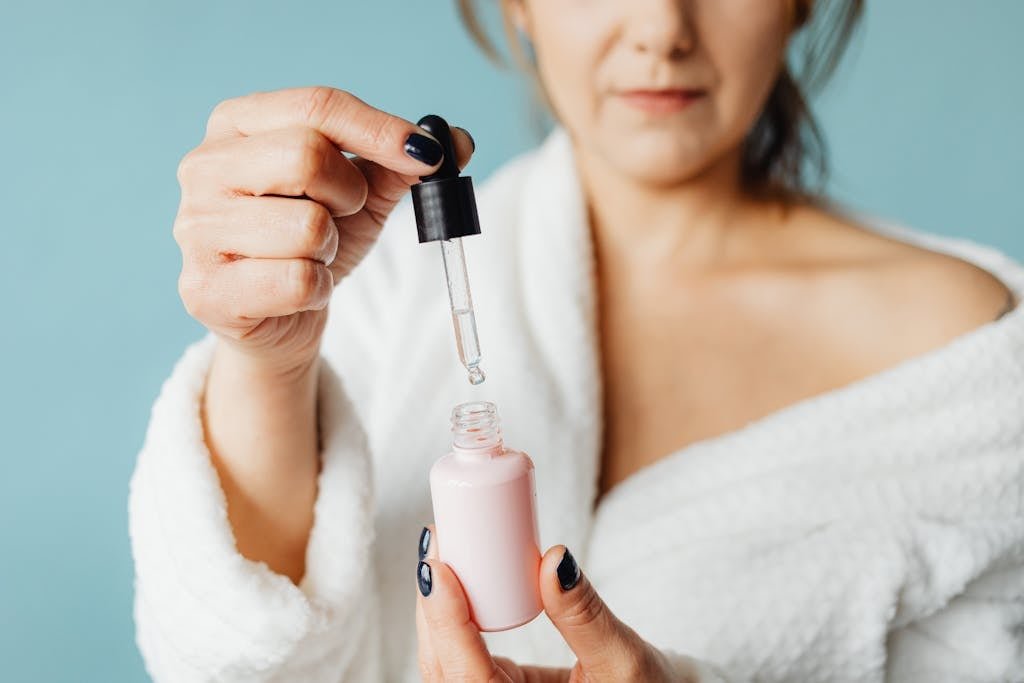
Let’s talk about serums. The ones we’re adding to our skincare routine target specific issues. If you struggle with oily, acne-prone skin, I recommend Glossier’s Super Pure Clarifying Niacinamide and Zinc serum. It contains 5% niacinamide and zinc PCA to help balance the shine and oiliness on your face while minimizing inflammation. Yes, it comes in a dropper, but a little bit drop of this goes a very long way, and it retails for $29.
Next up, vitamin C is a must in your 20s skincare routine. You don’t have to go crazy and break the bank, especially because you’re usually not so well off in your 20s.
While Skinceuticals is top-notch but it costs a lot of money, Timeless offers quality vitamin C products. They have options with 10% and 20% ascorbic acid. The orange packaging contains the 10% version, and the yellow one has 20%. Both smell the same—like hot dogs. It looks orangey-amber, and it comes in an opaque pump, which I prefer to a dropper, even though I know that both a pump and a dropper get a little bit of air in them. I still think the pump is overall better, and that retails for $24.
using retinol in your 20s
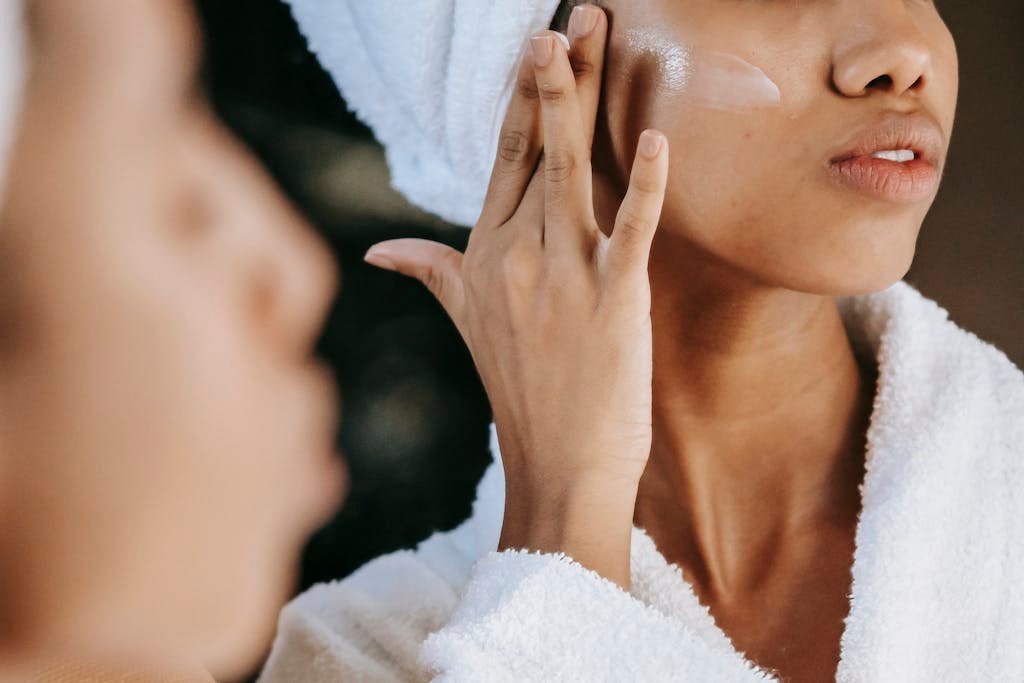
Then, we have retinols. Retinols, while popular are not going to be for everyone. You might have tried them in your teenage years to combat blackheads and whiteheads, but if you haven’t, they might sound scary to you. But not all retinols are created equal.
Instead, When using retinol, it’s crucial to understand the type and percentage to really know how to titrate it for your skin. So, for very, very beginners, people who just want to try it out, Glossier have a gentle $35 0.5% Pro-retinol, which is a little misleading because it’s not even a retinol; it’s a hybrid of retinol and sunflower seed fatty acids, but it’s retinyl sunflower rates. It’s extremely light, very, very gentle.
However a pea-sized amount is exactly how much you need to use on your face, you need to be cautious around sensitive areas like your mouth and chin. You probably want to start using this like three nights a week and then see how you tolerate it and add a night.
Now, if you want to try something a little bit stronger, I really do like e.l.f. They have their Granactive Retinoid as well as 0.06% retinal and antioxidants in it. The Granactive Retinoid is Hydroxy Pinacol Retinoate, and it is a cousin of the active form of retinol, also known as tretinoin. So, studies are saying that it is almost as effective as the active form, although it is not technically the active form, and is less irritating than traditional retinol. .
Consistency over intensity is the main goal here , and once you get flaky, red, and irritated, you know you’ve gone too far, and you’ve got to take a step back because the inflammation is what’s going to damage to your skin in the long run.
eye cream in your 20s?
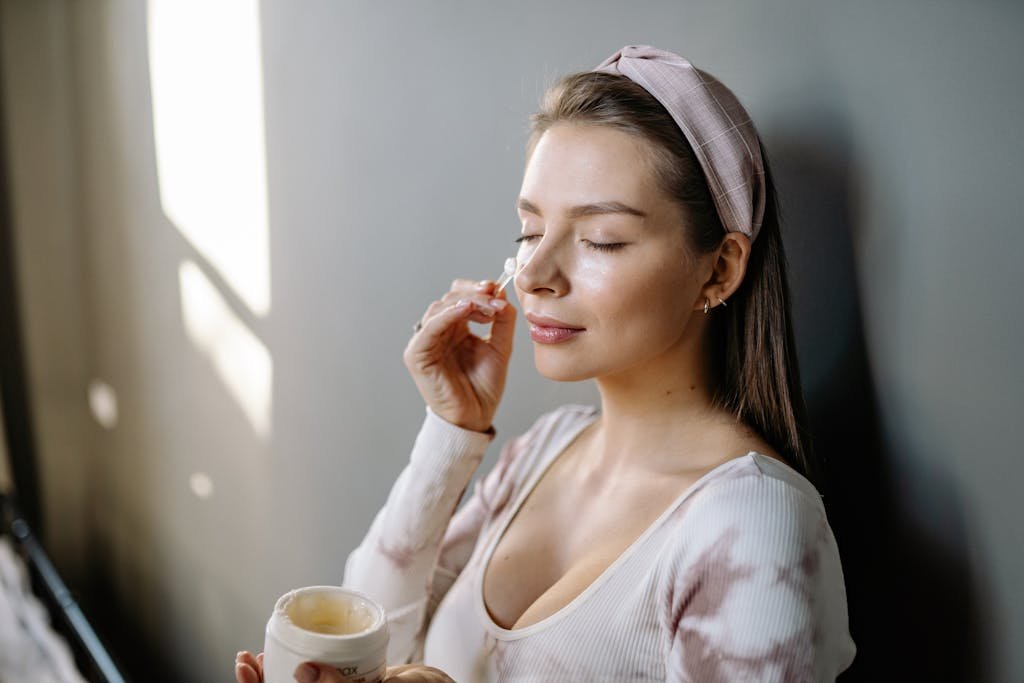
When it comes to eye creams, forget all the brands’ marketing schemes and the TikTok influencers trying to sell you on eye creams – you really don’t need them. Yes, I’m saying it loud and clear: at your age, if you can handle elf Granactive Retinoid, you’re good to go without eye creams.
Just take a small amount and gently apply it under your eyes. Before that buffer it with moisturizer, meaning make sure to moisturize your skin first, then apply the retinol. If your eyes are particularly puffy, you can use a de-puffer around them and seal it with a thicker moisturizer.
You don’t really need a specific eye cream because, again, your skin isn’t overly dry and you still have relatively good oil production. If you’re dehydrated, meaning you’re lacking water content in your skinyou can opt for a heavier moisturizer or seal it with Vaseline (And no, I’m not pushing Vaseline because I’m sponsored, I’ve never been, I’ve never done pay to play, they’ve never paid me), But yeah you can actually use it under your eyes. However, if you’re prone comedones (those stubborn little whiteheads or tiny cysts) , you may not want to use Vaseline under your eyes. Instead, use a nicer, more breathable moisturizer.
Long story short, you don’t have to shell out big bucks for a tiny jar of eye cream. It’s a scam and not necessary.
Must have moisturizers in your 20s
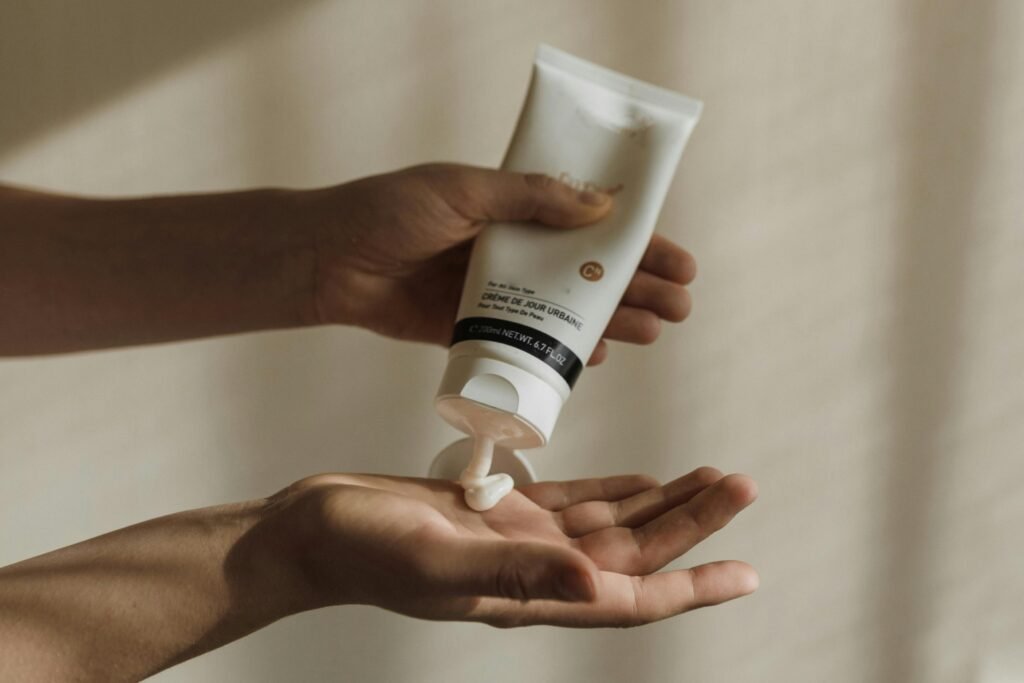
When it comes to moisturizers, it’s important to pick ones that match your climate. In dry areas, like deserts, you’ll want hydrating products such as mists, serums, and moisturizers to keep your skin moisturized. But if you’re in a humid place, like a tropical area, lighter options are better because heavy creams might feel too much. Personally, I love moisturizers that do more than one thing, especially on busy mornings when I don’t have time for a complicated routine.
One of my favorites is Dr. Dennis Vitamin C Lactic Oil-Free Radiant Moisturizer. It has vitamin C, which helps keep it fresh for longer compared to other forms of vitamin C. Although it’s not super strong, I’ve been using it twice a day since August 2021. It’s not only my go-to for vitamin C but also great for most skin types because it’s light and won’t clog your pores. If you’re in a dry area and need extra hydration, you can layer Kiehl’s Ultra Facial Cream on top for a moisture boost. This cream doesn’t have active ingredients to lock in moisture, so it’s perfect for sealing in the benefits of Dr. Dennis’ moisturizer.
Yes, Dr. Dennis moisturizer costs $77, but it’s like getting a two-in-one deal since you don’t need a separate vitamin C product, saving you time and money. You can use the extra cash to tackle other skin issues with additional serums.
For does of you on a budget? Byoma offers a basic gel moisturizer for a more budget-friendly $15. While it may not contain vitamin C, it effectively hydrates the skin, making it an excellent option for those in need of an extra layer of moisture. Its lightweight texture almost resembles a hybrid between a serum and a moisturizer, contrasting with Kiehl’s thicker formula. These options provide diverse choices to suit different skincare needs and preferences.
Must have sunscreens in your 20s
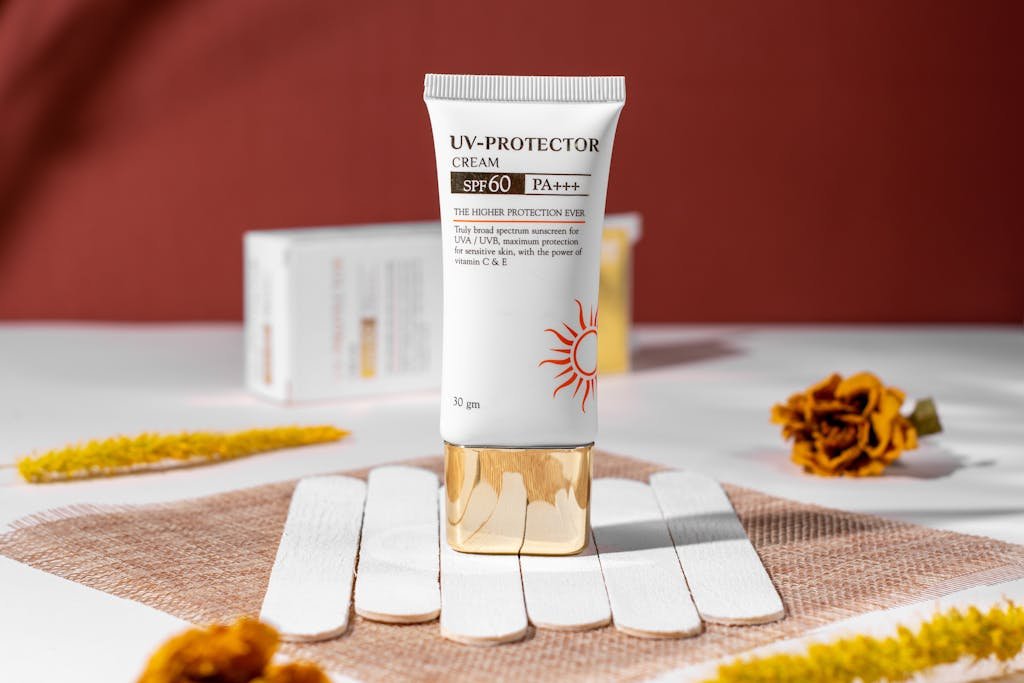
And lastly, we have sunscreens. Love me or hate me for saying it, sunscreen is a must-have for skincare, especially in your 20s. It’s essential to make it a regular part of your routine. If you can’t develop or simply choose to ignore it out of laziness, then you are just wasting your time and, most importantly, your hard-earned money.
La Roche-Posay’s Double Repair Face Moisturizer with ceramides, priced at $23, is excellent if you’re in a really dry climate; it offers SPF 30 protection. Super Goop’s Play SPF 50 is a stronger option if you need higher protection.
If you live in regions closer to the Equator or in the southern hemisphere like Colombia or Brazil, SPF 50 is necessary daily, especially when the UV index is above three (You can check the UV index on your iPhone). Anything above three means you definitely need to be wearing sunscreen that day.
In the northern hemisphere like some European countries where UV levels are lower, you don’t want to wear sunscreen per se every day because it’s going to burn your eyes. However, Laura Mercier’s chemical sunscreen with SPF 25 or SPF 30 doesn’t irritate the eyes. It’s great; I use it every day as a makeup base. I apply two full fingers under my makeup, and I’m good to go. I love it; it’s hydrating and gives a nice sheen.
For a glowing look, try Super Goop’s Glow Screen, which doubles as a highlighter. I use it on the high points of my face. I love it because it gives me that radiant finish. However, be cautious; I can’t tolerate it all over my face; it does burn and cause eye irritation.
The bottom line
So, with that said, this was your skincare advice for your 20s. I hope you learned a lot through the the tips I’ve shared. I’ve certainly learned a lot from my own mistakes.
If I could turn back time, I do wish I had gotten into the routine of using sunscreen more and washing my face more diligently. Although, I do think I got very lucky that Ihad someone close to me who breathes dermatology – believe it or not, my fiancé was what saved my skin.
However, not everyone has someone to point out their skincare mistakes like I did. That’s why I’m here to help. Remember to use sunscreen regularly, keep your face clean, and try not to repeat the same mistakes I made.
I found that facials only provided temporary solutions. It wasn’t until I stuck to a consistent skincare routine that I noticed lasting improvements. Anyway, have a great day and take care of your skin!
My readers’ feedback matters to me. If you have any questions or thoughts, please leave a comment below.

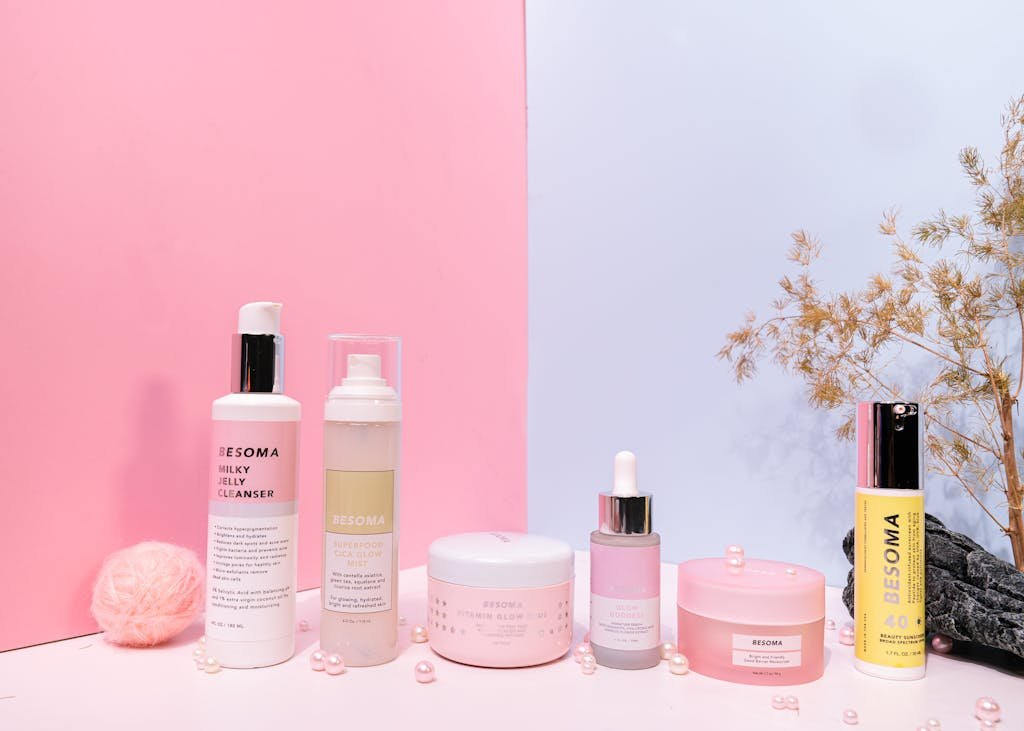
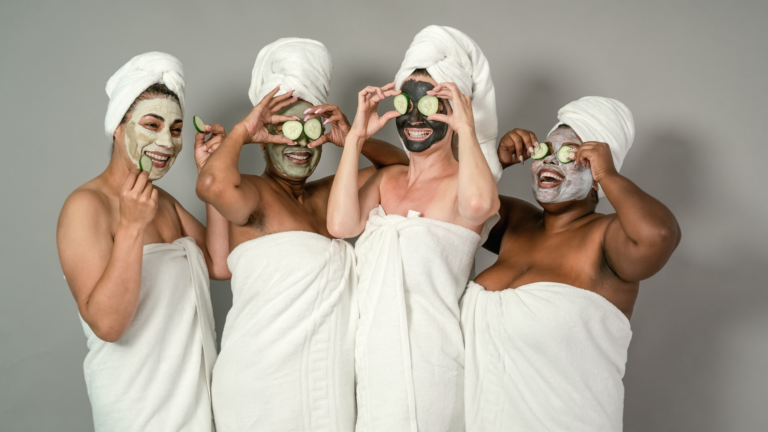

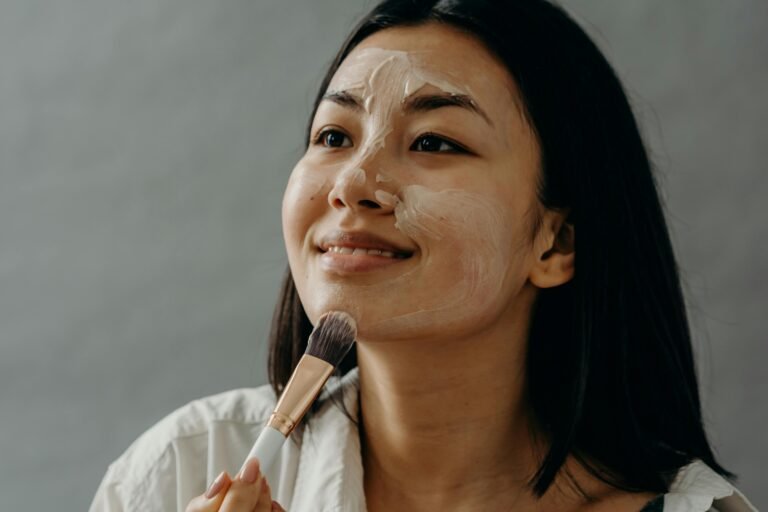
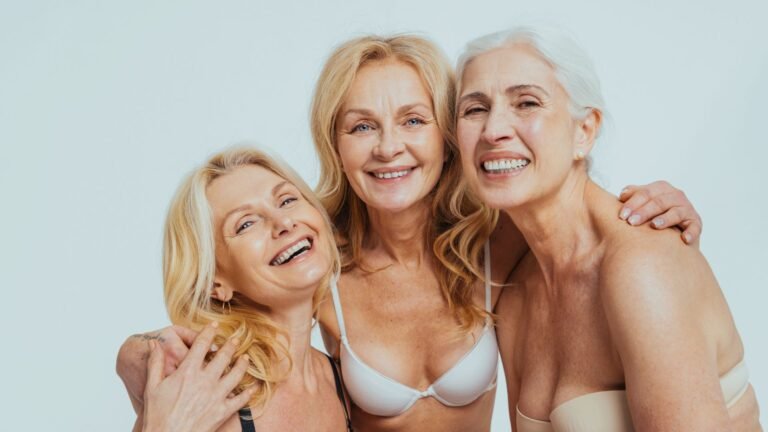

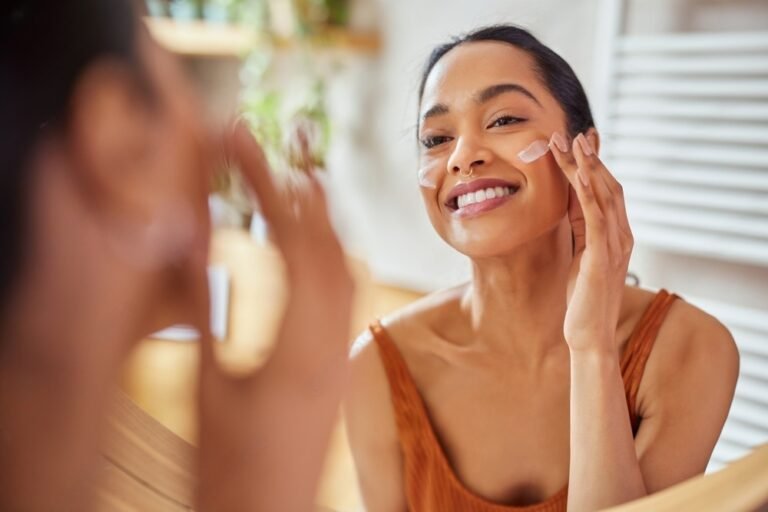
One Comment